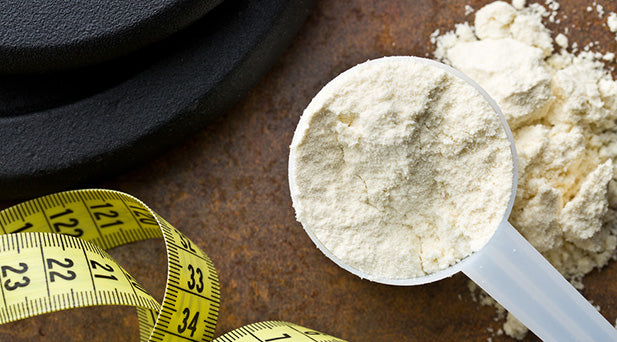- 2026 ›
-
- ›
-
- ›
-
- ›
-
- ›
-
- ›
-
- ›
-
- ›
-
- ›
-
Understanding what's inside your protein shake

Adding protein powder to your diet is a great way to improve your health, if it is a high-quality product like the ones offered by Nutrition53.
Protein shakes have become an integral part of most modern healthy living lifestyles. It can be difficult to get adequate amounts of protein from diet alone, making protein shakes the next best thing. High-quality protein helps regulate appetite and offers numerous health benefits.
To better understand the wonders protein shakes can do for your body, you need to understand what's inside your protein powder.
What should be in your protein powder?
For your body to reap the full benefits that protein powders have to offer, there are some key ingredients you should look for. Not every protein powder will work for every individual, as we each have different dietary needs and restrictions.
However, there are some high-quality ingredients that aid in the performance of your protein powder. Here is a list of high-quality protein powders and ingredients, along with a short synopsis of their most beneficial qualities.
Whey. Whey is a milk-based protein with a high concentration of three branched-chain amino acids. These easily digestible amino acids help support muscle synthesis. Whey protein is especially popular with athletes, as it contains quick release amino acids that support healthy muscle repair.
Casein Protein. Casein is another milk-based protein with adequate amounts of essential amino acids. It is also popular with athletes and bodybuilders for its support of muscle synthesis. The amino acids in casein, however, are released into the bloodstream slowly. This sustained release of amino acids feeds muscle growth over the long term.
Soy Protein. Soy is a quick-release, plant-based protein. Its effects are comparable to whey protein in muscle synthesis, but it is dairy-free and often the best choice for those who are lactose intolerant. It is often best to opt for an organic form, however. Many non-organic soy protein powders are genetically modified.
Plant-Based Blends. Plant-based proteins are made from a blend of different plant sources and contain amino acid chains that support muscle synthesis. However, a larger daily dose is typically required. The reason for this is because they lack key amino acids found in animal-based proteins. The efficacy of plant-based proteins compared to their animal-based counterparts has been a hot-button debate for some time.
Brown Rice Protein. Brown rice protein is often popular with sports enthusiasts who follow a plant-based diet. One study showed that brown rice protein yielded the same results as whey protein in an eight-week study. It is often recommended that proponents of brown rice protein also ingest food high in lysine and leucine amino acids.
- Pea Protein. Pea protein is a vegetarian protein sourced from the yellow split pea. It is hypoallergenic and high in multiple muscle-building amino acids. Pea protein typically contains very few additives and artificial ingredients, if any. It is recommended that you pair it with contrasting whole grain foods.
- Hemp Protein. Hemp protein is vegan and hypoallergenic, making it digestion-friendly. It is packed with essential fatty acids, which make it optimal for muscle building. However, it does lack the amino acid methione, so it is considered incomplete. Hemp protein is often recommended for use in a blend.
- Creatine. Creatine powder gives your muscles the energy they need to work at an optimum level. It hydrates muscle cells and may even benefit neurologic health. Added peptides in creatine powders can make the labels misleading. Those using creatine powders should opt for maximum protein count.
- BCAAs (Branched-Chain Amino Acids). Branched-chain amino acid proteins are optimal for maximum muscle protein synthesis. They are vital for muscle health and recovery. Some protein powders, like whey, casein and soy, contain plenty of branched-chain amino acids. Plant-based proteins, however, provide the most beneficial results when combined with branched-chain amino acid proteins.
- Omega-3. Omega-3's are just good all around. They offer various essential health benefits and may even help combat muscle soreness. Omega-3 fatty acids help reduce inflammation in the body. This is crucial for minimizing post-workout fatigue and soreness, in addition to the many other positive effects.
- HMB. HMB is produced when leucine is broken down. It supports muscle strength, increases recovery and decreases soreness. It also inhibits muscle loss in times of strenuous training and restrictive dieting. Many athletes and sports enthusiasts add HMB protein powder as a post-workout recovery drink.
What shouldn't be in your protein powder
Here is a list of ingredients you don't want to see on your protein powder label. These ingredients can reduce or even prohibit the healthy effects of consuming protein powders altogether. When these ingredients are introduced into your protein powder, they can cause bloating, raise cholesterol and increase your glycemic load. Besides, they can be downright irritating to your gastrointestinal system.
- Artificial sweeteners
- Gluten o skim milk
- Vegetable oil
- Thickeners
- Fillers
It is always best to opt for a complete protein powder with plenty of essential amino acid chains, such as those from Nutrition53. Get organic whenever possible and combine them with delicious whole food ingredients for optimal results.

